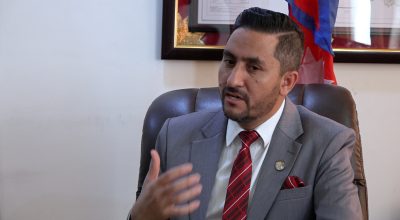
Kathmandu, March 25: The literacy rate of people with disabilities is found low in the country. It has been seen that only half of the disabled population is literate due to geographical hardship, social discrimination and lack of disability-friendly education system in the country.
While the total literacy rate of the country is 76.2 percent, the literacy rate of persons with disabilities is only 50.1 percent. Similarly, the literacy rate of women with disabilities is still low in comparison to others. Only 38.5 percent of the total disabled population is female literate in the country.
This fact has been revealed in the statistical report on the disabled that was published based on the data collected in the National Census 2078 BS. In the previous census in 2068 BS, the literacy rate of persons with disabilities was 43.2.
According to the census, the literacy rate of men was 52.2 and that of women was 33.7. Stakeholders say that while the literacy rate seems to be improving, it is not encouraging when compared with the recent public report.
According to the ‘National Census 2078 BS Disability Statistical Report’ jointly published by the National Statistics Office and the National Federation of Disabled Persons (NFDN), 2.2 percent of the total population has minor form of disability.
The census report states that the number of people with disabilities in the country is 647,744. Out of 621 thousand 423 people aged five years and above, only 311 thousand 630 people are literate.
Dhundiraj Lamichhane, head of the population branch of the National Statistics Office, said that for the first time in the 2078 BS census, disaggregated data on disability were collected and analyzed. He said, “Statistical analysis with the Federation has completed the insufficient statistics of the disability sector to a certain extent.”
In the report, which was divided into twelve types of disabilities and analyzed, the most literate are visually impaired.
Among the totally blind, 63.3 percent are literate. In this cluster, 70.4 percent of men and 56.3 percent of women are literate. People with intellectual disabilities are the least literate. Only 20.4 percent of the population of this cluster is literate, the report reads that 22.8 percent of males and 17.8 percent of females are literate. Likewise, among those with physical disabilities, 59.9 percent are literate. 68.3 percent of men and 47.8 percent of women are literate.
Among the 44.6 percent literates with low vision, 59.6 percent are males and 30.5 percent are females.
Ramesh Pokharel, the spokesperson of the National Handicapped Association, said that the literacy rate of the visually impaired is low compared to the totally blind, so they have to study together with citizens of all genders, and have to use the same curriculum and sharing with same educational materials. Pokharel said that the literacy rate of this group is also moderate because it is easy to read due to the provision of Braille script for the blind, separate classrooms, hostel arrangement among other basic arrangements.
According to the report, the literacy rate of the deaf is 40.4 percent, while that of males is 50.5 percent and that of females is 29.2 percent. Literacy rate of those with slow hearing is 41.5 percent, 54.3 percent of males and 28.4 percent of females. Similarly, the literacy rate of the hearing-impaired is 44.9 percent, while that of males is 56.1 percent and that of females is 32.4 percent.
The literacy rate of people with voice and speech disabilities is 38.8, of which 44.5 percent of men and 31.4 percent of women. The literacy rate of people with mental or psychosocial disabilities is 46.3 percent, while that of men is 53.9 percent and that of women is 37.7 percent. The literacy rate of people with hemophilia is 66.1, in which 76.7 percent of men and 56.4 percent of women.
Similarly, the literacy rate of people with autism is 30.4, in which 38.8 percent of men and 23.6 percent of women. The literacy rate of people with multiple disabilities is 47.9 percent, while literacy is 53.1 percent and 41.1 percent for women. The chairperson of NFDN, Devi Dutt Acharya, said that with the publication of the disaggregated statistics of disability, there is information about the many types of opportunities that people with disabilities are getting in a different way in social life.
“In this area, we have collected and published data in totality”, said the chairman Acharya, “This time, due to the publication of fragmented data, it was found that the literacy rate of women with disabilities is so poor.” Chairperson Acharya shared that there was a problem in the poor educational condition of the disabled from curriculum to school structure. “The curriculum is also not disabled friendly.” Chairperson added.
Meanwhile, in normal school buildings, students with disabilities cannot enter the class room, so even if they want to, they are not able to study.” Jagdish Prasad Adhikari, director of the Center for Disability Human Rights, expressed his satisfaction that despite the lack of curriculum, Braille books, teachers and infrastructure, literacy and education in the area is progressing.
According to the statistics of the Ministry of Education, Science and Technology, four percent of school-age children are out of school, and 80 percent of them are children with disabilities. However, literacy rate of people with disabilities is low in the country, efforts and perception regarding education to them is advancing of late. #Nepal #RSS #education #disable












